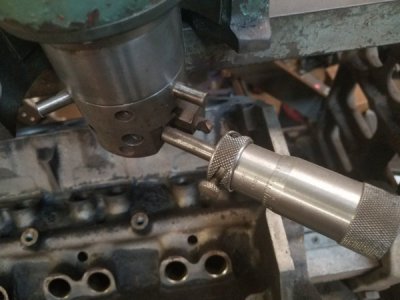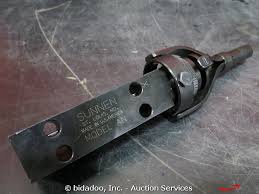The block deck should be indexed to the crank center line, so by the head gasket surface being 90* to the quill, that should set your bore close top to bottom.
then if you put a test indicator on the quill and checked the bore top to bottom and you had minimal difference in the measurement, less than .002 would be ok, this need to be measured in non ring travel area of the bore
now finding the center of the bore, would be the issue, Now if could accurately measure from the center line of the tool holder to the cutter tip, you could hand spin the cutter down the bore, as you hand crank the quill down.
the set up would have to be .001 under standard bore spec.
But I cheat when I bore a block...

I have 3 moving fingers that centers the bore
then you can see the cutter bit and the setting mic.


